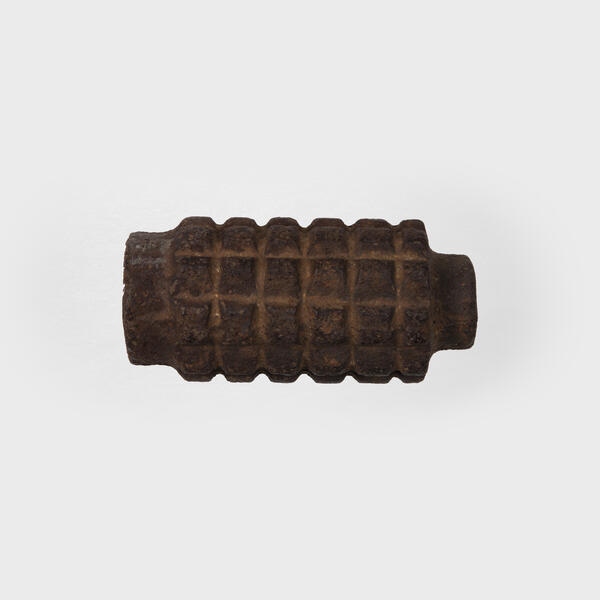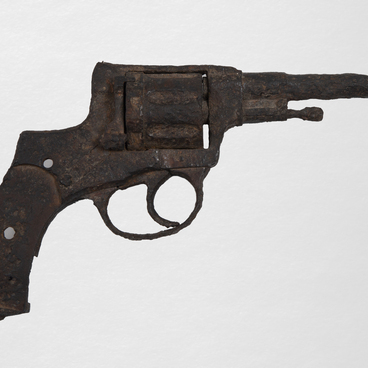The collection of the Zimovniki Museum of Local History houses a case of an anti-personnel fragmentation mine (POMZ-2), a Soviet anti-personnel mine with a tense-action fragmentation defeat. It was used in the Red Army from 1941 to 1943 on all fronts of the Great Patriotic War.
Pavel Radevich and Nikolay Ivanov designed this model in the fall of 1941. It consisted of a fuse with P-shaped cotter pin, igniter and cast-iron body with longitudinal notches, along which the shell was broken. There was 75-gram TNT inside. Total weight of the mine was about 2.3 kilograms, diameter was six centimeters and height of the case was 13 centimeters.
Two wooden stakes and a piece of metal wire 8.3 meters long were also included. One of the stakes was driven into the ground and the anti-personnel mine was placed on it, and on the other, a stretch of wire was stretched and connected to the cotter pin. The mine would explode when the enemy hit the trip wire. However, the explosion might not happen immediately. The timing depended on the air temperature: for example, at +40°C, the mine was ready to explode three minutes after it was set, and at -40°C, it took 59 hours.
This model had no self-destruct features and the projectile could not be disarmed. When detonated, the mine struck all nearby objects at a distance of up to four meters. The main purpose of the antipersonnel mine was to hit the enemy’s manpower. Soldiers were wounded because they were hit with shrapnel in explosion.
The POMZ-2 mine was easy to set. So it was used not only in minefields, but also alone: in passageways, rubbles and barricades.
The mine of this model is not produced any longer. It is often found during excavations. The shell had a metal casing, so it is easy to detect with a metal detector. For searchers, such finds can be dangerous — even after many years, the mine could explode. It is not necessary to hit the wire — because of the deep corrosion of the casing the shells are barely held in the cockpit. So members of the search parties do not touch the mines when they find them, but report them to the police or EMERCOM.
Pavel Radevich and Nikolay Ivanov designed this model in the fall of 1941. It consisted of a fuse with P-shaped cotter pin, igniter and cast-iron body with longitudinal notches, along which the shell was broken. There was 75-gram TNT inside. Total weight of the mine was about 2.3 kilograms, diameter was six centimeters and height of the case was 13 centimeters.
Two wooden stakes and a piece of metal wire 8.3 meters long were also included. One of the stakes was driven into the ground and the anti-personnel mine was placed on it, and on the other, a stretch of wire was stretched and connected to the cotter pin. The mine would explode when the enemy hit the trip wire. However, the explosion might not happen immediately. The timing depended on the air temperature: for example, at +40°C, the mine was ready to explode three minutes after it was set, and at -40°C, it took 59 hours.
This model had no self-destruct features and the projectile could not be disarmed. When detonated, the mine struck all nearby objects at a distance of up to four meters. The main purpose of the antipersonnel mine was to hit the enemy’s manpower. Soldiers were wounded because they were hit with shrapnel in explosion.
The POMZ-2 mine was easy to set. So it was used not only in minefields, but also alone: in passageways, rubbles and barricades.
The mine of this model is not produced any longer. It is often found during excavations. The shell had a metal casing, so it is easy to detect with a metal detector. For searchers, such finds can be dangerous — even after many years, the mine could explode. It is not necessary to hit the wire — because of the deep corrosion of the casing the shells are barely held in the cockpit. So members of the search parties do not touch the mines when they find them, but report them to the police or EMERCOM.



